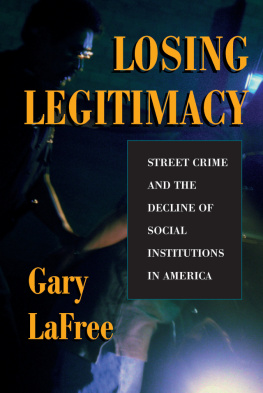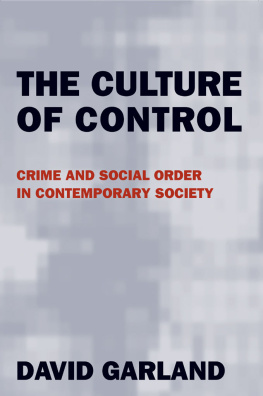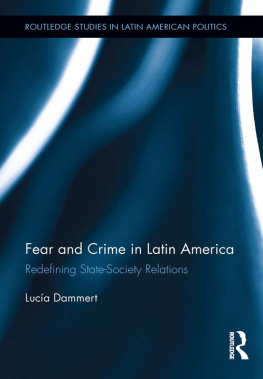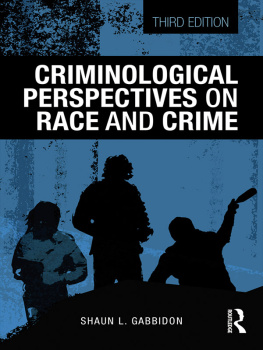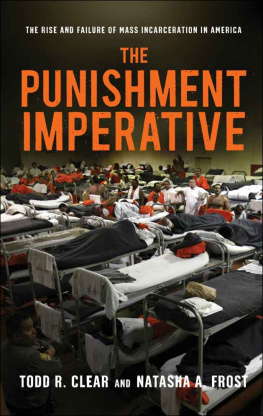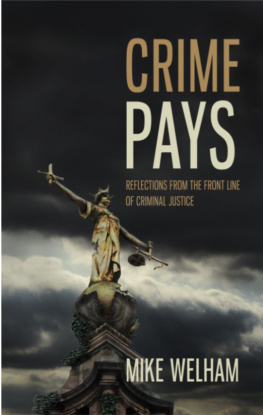Losing Legitimacy
Crime & Society
Series Editor John Hagan
University of Toronto
EDITORIAL ADVISORY BOARD
John Braithwaite, Robert J. Bursik, Kathleen Daly, Malcolm M. Feeley, Jack Katz, Martha A. Myers, Robert J. Sampson, and Wesley G. Skogan
Losing Legitimacy: Street Crime and the Decline of Social Institutions in America, Gary LaFree
Casualties of Community Disorder: Women's Careers in Violent Crime, Deborah R. Baskin and Ira B. Sommers
Public Opinion, Crime, and Criminal Justice, Julian V. Roberts and Loretta Stalans
Poverty, Ethnicity, and Violent Crime, James F. Short
Great Pretenders: Pursuits and Careers of Persistent Thieves, Neal Shover
Crime and Public Policy: Putting Theory to Work, edited by Hugh D. Barlow
Control Balance: Toward a General Theory of Deviance, Charles R. Tittle
Rape and Society: Readings on the Problems of Sexual Assault, edited by Patricia Searles and Ronald J. Berger
Losing Legitimacy
Street Crime and the Decline of Social Institutions in America
Gary LaFree
First published 1998 by Westview Press
Published 2018 by Routledge
711 Third Avenue, New York, NY 10017, USA
2 Park Square, Milton Park, Abingdon, Oxon OX14 4RN
Routledge is an imprint of the Taylor & Francis Group, an informa business
Copyright 1998 Taylor & Francis
All rights reserved. No part of this book may be reprinted or reproduced or utilised in any form or by any electronic, mechanical, or other means, now known or hereafter invented, including photocopying and recording, or in any information storage or retrieval system, without permission in writing from the publishers.
Notice:
Product or corporate names may be trademarks or registered trademarks, and are used only for identification and explanation without intent to infringe.
Library of Congress Cataloging-in-Publication Data
LaFree, Gary D.
Losing legitimacy: street crime and the decline of social
institutions in America / Gary LaFree
p. cm. (Crime & Society)
Includes index.
ISBN 0-8133-3450-0 (hardcover) ISBN 0-8133-3451-9 (paperback)
1. CrimeUnited States. 2. United StatesSocial
conditions1980-3. Crime preventionUnited States. 4. Social
control. I. Title II. Series: Crime & society (Boulder, Colo.)
HV6789.L34 1998
364.973dc21 98-13957
CIP
ISBN 13: 978-0-8133-3451-6 (pbk)
To Vicki, Andy, Kati, and Alix
This book offers an explanation for the dramatic changes in street crime rates that have occurred in America since World War II. Although I didn't know it at the time, the book began in the summer of 1982 when I happened to run across a table showing trends in U.S. murder rates for the postwar years. The table fascinated me. It resembled an alpine range above a broad plain with a rapidly rising slope ending in two craggy peaks and then a series of high serrations. The period immediately following World War II was represented by the broad plain; the 1960s were shown by the rapid and steep ascent; and the late 1970s corresponded to the high, jagged peaks.
In fact, I later found out that in the fifty years following World War II street crime rates in America increased about eightfold. These increases were historically patterned; were often quite rapid; and were disproportionately driven by young, African American men. Much of the crime explosion took place in a space of just ten years beginning in the early 1960s, I gradually became convinced that common explanations of crime based on biological impulses, psychological drives, or slow-moving social developments could not account for the speed or the timing of these changes or their disproportionate impact on racial minorities.
To try to understand what had produced these crime trends, I began to collect information on a wide variety of potential explanations. This proved to be challenging. Although efforts to develop data sets on changes over time are beginning to increase in number, criminology is still overwhelmingly dominated by research that examines relationships at just one time point. Nevertheless, as data began to accumulate and analyses of these data continued, I became increasingly convinced that changing social institutions provided the most plausible explanation for the crime trends observed in postwar America.
Institutions are arguably the most important of all human creations. They are the major mechanisms for regulating human behavior, they are central to our moral values, and they are capable of rapid change. The research presented in this book shows that postwar crime rates were linked especially to changes in political, economic, and family institutions. In particular, crime increased along with growing political distrust, economic inequality, and family disintegration. These changes were especially pronounced for African Americans. American society responded to the crisis in traditional institutions by investing more in other social institutions, especially criminal justice, education, and welfare. As traditional institutions stabilized in the 1990s and as spending on new institutions continued to increase, crime rates finally began to decline in the last few years of the twentieth century. The trends in crime and institutional legitimacy reviewed in this book tell a story of transformation as the comparative stability of the 1940s and 1950s gave way to the tumultuous changes of the 1960s and 1970s and, finally, to the uneasy balance of the 1980s and 1990s.
Gary LaFree
It seems to take a village not only to raise a child but also to write a book. The final content of this book owes a great deal to the contributions of Kriss Drass, who has been my collaborator on several related research articles, In particular, Kriss was responsible for sophisticated quantitative analysis that although not directly included in this book was nevertheless critical in developing many of the conclusions on which the book is based.
I have also been fortunate to have a great many colleagues with sufficient interest and stamina to provide helpful advice and criticisms. Their number begins with a group of graduate student colleagues, especially Michelle Hussong, Pat O'Day, Chris Rack, and Aki Takeuchi, who helped in various stages of data collection and stimulated my thinking about many of the topics included. Chris Birkbeck, Malcolm Feeley, Bob Fiala, Bob O'Brien, Lynn Pickard, Larry Ross, Bert Useem, and Richard Wood read earlier drafts and provided helpful comments. I want to thank John Hagan, the series editor, not only for his comments but also for his unflagging support. Likewise, Marcus Boggs, Adina Popescu, and Lisa Wigutoff at Westview have been consistently supportive and helpful.
I spent a good deal of time working out the details of the arguments made here in shorter works before feeling comfortable enough to tackle a book-length project. Part of are revisions of an article I wrote with Kriss Drass that originally appeared in the American Sociological Review (volume 61, 1996). These revisions are all included here with the permission of the press and journals.
Institutional support along the way has also been a big help. In particular, part of the research reported in the book was supported by a grant from the Harry Frank Guggenheim Foundation. I also received a paid semester from the University of New Mexico to help finish the project. Jeff Mix, Chris Pawley, and Brock Perkins at the university's Institute for Social Research and Rose Muller and Karen Majors from the Department of Sociology helped greatly with library sources, graphics, and the preparation of the manuscript.

